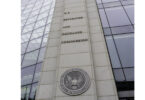On Saturday, the G7 issued a communique covering central bank digital currencies (CBDC) and global stablecoins.
Regarding CBDCs, the G7 finance ministers and central banks stated a CBDC could act as a safe settlement asset and an anchor for the payment system. At the same time, they addressed some of the concerns about CBDCs stating a desire to support innovation, competition and financial inclusion. A CBDC should operate “within appropriate privacy frameworks and minimise spillovers,” said the communique.
Finally, they stated they are working on common CBDC principles and will publish something later in the year. In October last year, the central banks of multiple G7 members published a joint CBDC paper in conjunction with the Bank for International Settlements (BIS). That BIS paper included Sweden and Switzerland, which are not G7 members and Saturday’s G7 communique also represents finance ministers, not just the central banks.
Turning to global stablecoins, the G7 reiterated that no global stablecoin should launch unless it is properly regulated. Back in 2019, the G7’s working group on global stablecoins triggered by Facebook-backed Libra (now Diem) concluded that global stablecoins carry systemic risks.
In October last year, a G20 working paper outlined a long list of planned stablecoin regulations, and the G7 at the time also said no global stablecoin should launch until these are in place. The Financial Stability Board responsible for the G20 working paper is looking at stablecoin oversight and plans to implement its recommendations with G7 support.
In the meantime, Diem has switched its domicile from Switzerland to the United States and has taken an apparently easier route to market for a US dollar stablecoin as opposed to a basket coin. However, given the definition of a global stablecoin is really about scale, it likely would be classed as a global stablecoin. Diem still needs a license from the NYDFS, so it remains to be seen how easy that is to get.
More recently, Diem’s chief economist said it would be prepared to replace its stablecoin with a CBDC. But given a digital dollar is likely several years away, anything could happen in between.






